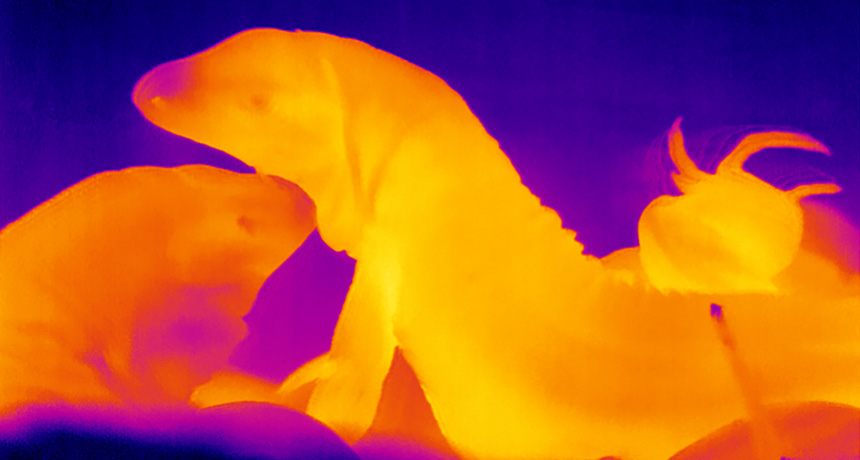Tegu lizards warm up for mating season

Data from temperature loggers and thermal imagery (shown) suggest that tegu lizards turn up their body heat as a byproduct of reproduction.
Glenn J. Tattersall

Data from temperature loggers and thermal imagery (shown) suggest that tegu lizards turn up their body heat as a byproduct of reproduction.
Glenn J. Tattersall